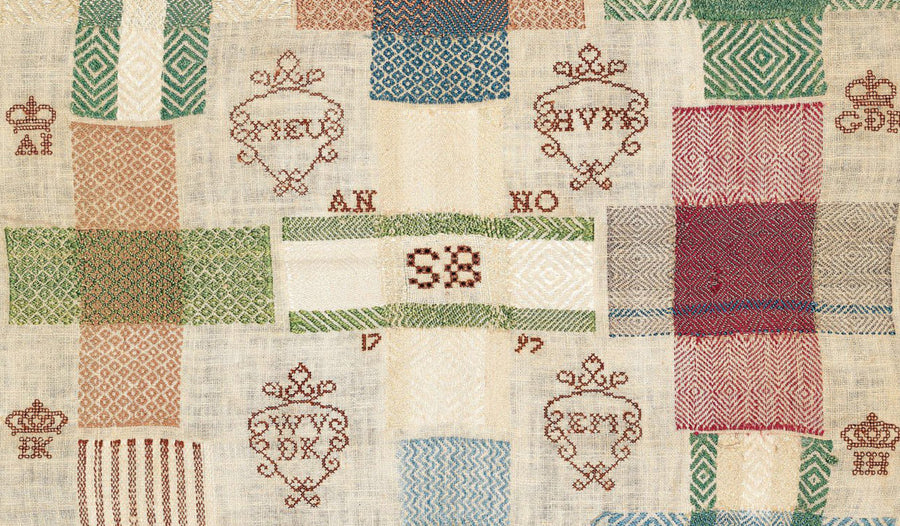
Darned! A Hidden History of Darning Samplers

A few years ago, it was simple: if you had a hole in your t-shirt, jeans or socks, you simply threw them away! Or at least, many did. But there was, and is still, a movement to artistically mend or repair them–to make a feature and statement about a darned, patched or laced tear or hole. What would people have thought about creative or visible mending, two hundred years ago?
Technically speaking, there are three different terms to use when repairing textiles. Mending is when a tear is repaired using a line of stitching. Patching is when a piece of cloth is used to repair a hole in the ground material by covering it. Darning is characterised by the use of yarn to replicate the structure of the ground. However, many people use these terms with a wide degree of fluidity, making no difference, for example, between mending and repairing.

All of these techniques can be found in samples and samplers dating back to at least the 18th century. A sampler was intended to show the sewing skills of a girl or young woman in needlework, namely structural sewing, mending, patchwork, and embroidery. Samples were intended for practicing a particular technique, so small pieces of cloth were often used. Both samples and samplers were used to learn and show mending, darning and patching skills.

There is an early darning sampler in the collection at the Textile Research Centre in Leiden that dates to 1763. This early sampler is made out of linen and worked using silk threads in various colours, in cross stitch and darning stitch. The darning blocks imitate the different structures of woven fabric, while other examples include blocks that imitate knitting.The darning blocks with weave structures were designed to show that the girl could repair a variety of different weaves, namely plain weave, twills and damasks, as well as effects such as stripes and checks. These were textile forms often used for clothing as well as household objects, such as tablecloths, napkins and bedding. These samplers were generally worked in a variety of colours, especially blue, green, red and yellow yarns. This was not done as a sign of creativity, but to prove to the teacher or mother that the girl really understood the basic weave structures and could reproduce them…
Excerpt from the article Darned! Darning Samplers, a Hidden History by Gillian Vogelsang-Eastwood.
Read the rest of the article in the newly released Issue 102 Mend. Find out how to subscribe here.

1 comment
I love this publication and I love the topic “Mend.” My grandmother, born in the mid 1800s, would have been aghast at today’s “creative” or “visible” mending. Had I tried visible mending as a child, she would have sent me back to “properly” make the mend. Tossing a textile because it was frayed or tattered was unthinkable in their, or my, youth since there were few replacements. Fascinating how we reconceptualize the world. Thank goodness we do for we’d still be running around in chastity belts….